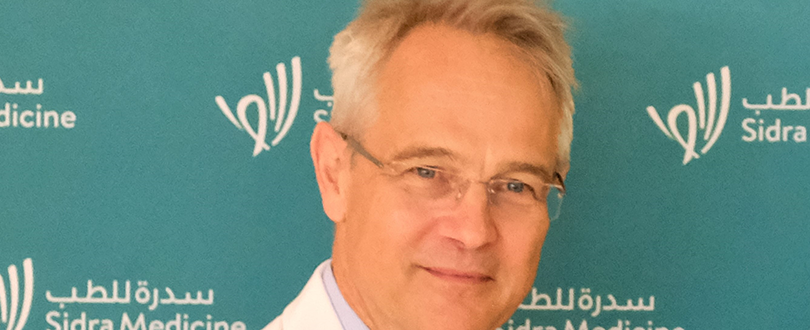Pediatric (Anatomical) Pathology, Where Rare Diseases Are Common

Adrian Charles, MD
Division Chief Anatomical Pathology, Department of Pathology
Sidra Medicine
Professor of Clinical Pathology and Laboratory Medicine
Weill Cornell Medicine-Qatar
The scope of pediatric pathology is wide – it covers pediatric medicine and surgery and also extends into intrauterine development and placental pathology:
Pregnancy and development of embryo/fetus and placenta
Pediatric surgical pathology:
. Routine (e.g. appendix)
. Specialised pediatric cases
. Tumours
. Developmental diseases (e.g. Hirschsprungs, metabolic, brain, muscular and skeletal)
. Acquired diseases (e.g. pediatric liver, gi disorders)
. Pediatric Autopsy:
-Genetic/developmental diseases (sudden and under prolonged care)
-Sudden unexpected death in infancy (Forensic cases)
This makes the specialty very interesting and varied, and requires one to keep up-to-date across many fields.
As many pediatric diseases have a tissue diagnosis, the role of the small number of pathologists covering the realm of pediatric diseases and cases tend to be shared; thismeans the pathologist sees many of the rare, interesting and challenging cases in a pediatric hospital. Their input is also often crucial for the treatment. These days,in addition,the pathologist has a role in biobanking and correlating the genetic changes with the morphology.
Pathology is the study of disease, and the pathologist thinks abouthow the morphology of the lesions reflects not only the cellular components, but the dynamic changes thatoccurover time, and also what non-visible factors such as cytokines and physiological changes occur. In developmental diseases,one also considershow the previous affects on development have led to the current pathology. Pathology therefore has strong interfaces with clinical medicine, but also with research, and this is reflected in the role pathology now playsin the recognition in apoptosis and helicobacter. Pediatric pathology and oncology have led to insights into tumorigenesis.
It is important to recognize that children are not simply little adults, and their diseases are often very different, especially in the area of malignancy and tumours. These diseases are often subtle, and often require integration of the history, clinical findings, radiology, and ancillary investigations - especially genetics. It is not surprising that many diseases occurring in childhood have a large genetic component, as they have had less years exposed to the environment than adults.
The diseases are often discussed at multidisciplinary meeting and a pathologist is part of a team involved in diagnosis and deciding the management.
The talk was designed to give a flavor of the challenges and the flavor of how a pediatric pathologist approaches their work.
-This you tube video gives a flavor .
https://www.youtube.com/watch?v=MkOX73m2IPo
-We have our journals:
https://journals.sagepub.com/home/pdp
-There are alsosocieties which extend around the world and join together in meetings and online forums where difficult cases are discussed.
-https://spponline.org/
-https://www.paedpath.org/